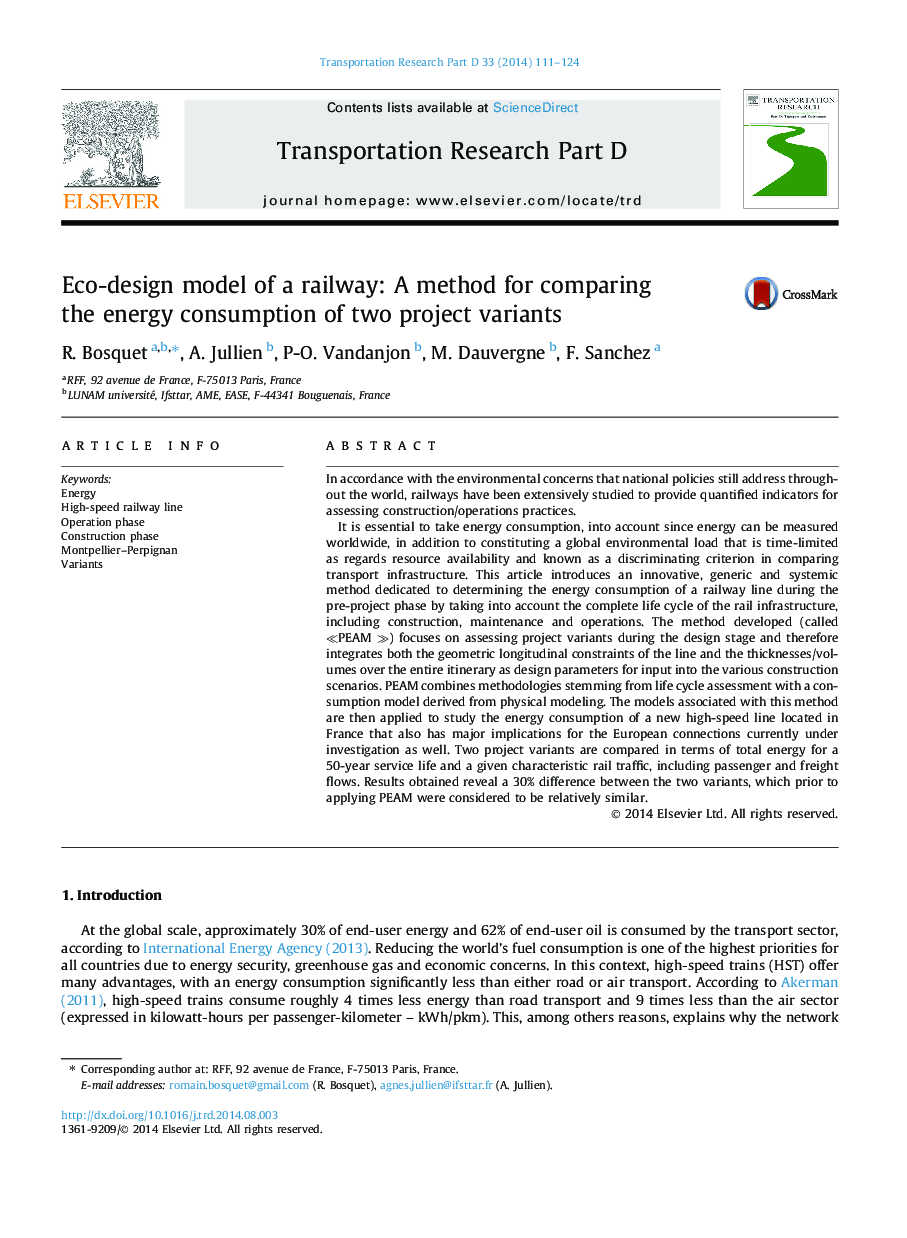| Article ID | Journal | Published Year | Pages | File Type |
|---|---|---|---|---|
| 1065697 | Transportation Research Part D: Transport and Environment | 2014 | 14 Pages |
•Resources and environment are taken into account for transport system design.•A methodology is proposed to compare variants at the pre-project stage as regards energy consumption.•Construction, maintenance and use phase are studied.•The methodology can be used for new high-speed line or new classical line.
In accordance with the environmental concerns that national policies still address throughout the world, railways have been extensively studied to provide quantified indicators for assessing construction/operations practices.It is essential to take energy consumption, into account since energy can be measured worldwide, in addition to constituting a global environmental load that is time-limited as regards resource availability and known as a discriminating criterion in comparing transport infrastructure. This article introduces an innovative, generic and systemic method dedicated to determining the energy consumption of a railway line during the pre-project phase by taking into account the complete life cycle of the rail infrastructure, including construction, maintenance and operations. The method developed (called ≪PEAM ≫) focuses on assessing project variants during the design stage and therefore integrates both the geometric longitudinal constraints of the line and the thicknesses/volumes over the entire itinerary as design parameters for input into the various construction scenarios. PEAM combines methodologies stemming from life cycle assessment with a consumption model derived from physical modeling. The models associated with this method are then applied to study the energy consumption of a new high-speed line located in France that also has major implications for the European connections currently under investigation as well. Two project variants are compared in terms of total energy for a 50-year service life and a given characteristic rail traffic, including passenger and freight flows. Results obtained reveal a 30% difference between the two variants, which prior to applying PEAM were considered to be relatively similar.
